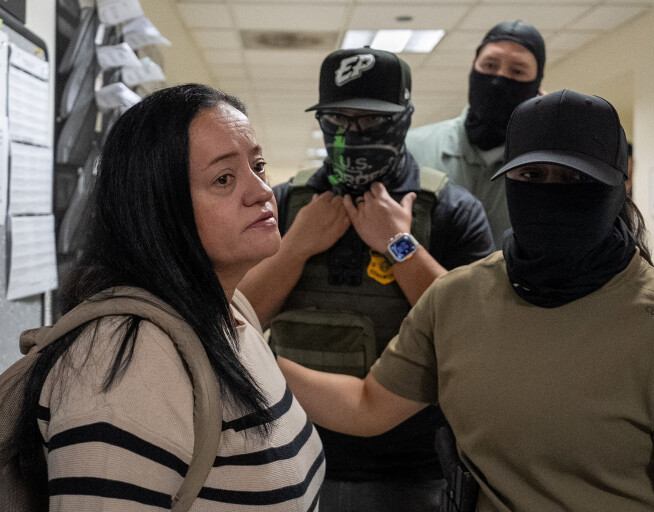Researchers' Zone:

Why are men hit hardest by COVID-19?
COMMENT: To answer that and many other questions, we need to examine how coronavirus is related to gender – and not just the biological one. This knowledge would also be helpful in the prevention and handling of future pandemics.
Even though the novel coronavirus may potentially infect us all, new research seems to indicate that it does not affect us all in the same way.
The virus appears to show more severe symptoms in men compared to women, and more men die from the virus than women (69 percent of all deaths in Western Europe are men).
Our knowledge of why this is the case is very limited. One hypothesis, which the Johns Hopkins University has put forward, is that hormones make women more resistant to the virus.
To that end, studies on seasonal flu have shown that oestrogen plays a role, but whether or not that is also the case with the coronavirus is far from having been confirmed.
This uncertainty highlights the need for greater insight into and understanding of how the coronavirus is related to gender issues.
Many factors at play
In order for our response to epidemics such as COVID-19 to be effective, it is important to analyse and address the biological characteristics, medical aspects, and gender norms, roles and conditions that affect the diverse vulnerability of women and men to the infection and to the received treatments.
We know that there are differences between the genders as to lifestyle, such as smoking, which affect diseases like chronic lung disease, cancer and heart conditions, and that these behavioural differences affect the way the body reacts to coronavirus.
The question is how we address the coronavirus in order to obtain an effective vaccine, better medicine and health care, and limit the socio-economic consequences of the crisis.
In this context, it is decisive how we consider gender in our response to the pandemic in order to achieve the best possible results.
In the following, I will present some concrete suggestions that may help us to manage future epidemics.
Gender in research content, methods and analyses
As we have seen, COVID-19 shows specific gender-based characteristics that we obviously have to take into account in research.
This comprises the formulation of research questions, the collection of data, the methods used and the analysis of results.
This implies the incorporation of gender in the content of COVID-19 research and in experiments so we can map out biological characteristics and other gendered issues and thus be able to better detect how the virus spreads and who gets the infection.
In this way, we can point to where it makes sense to concentrate our efforts and to identify the most effective solutions.
We need more data on gender and pandemic outbreaks
We know from previous research that women’s immune systems respond more strongly than men’s and combat a virus more actively when subjected to a viral attack, and that women often produce more antibodies when vaccinated.
A more active immune system provides greater protection against the virus – even at an advanced age.
However, research also shows that to date it has not been possible to collect gender-relevant data and to document the significance of gender in relation to previous epidemic outbreaks.
The lack of gender-related data can have a significant impact on the outbreak and treatment of a disease, as well as on society’s preparedness and response to epidemics.
Gendered considerations as regards the study’s population and data collection, and the publication of gender-related data on outbreaks, the development of the disease and patients’ recovery, are important from both a medical and public health perspective.
For example, it can help us gain knowledge about whether men’s or women’s bodies are more susceptible to the coronavirus, which can increase the safety and effectiveness of vaccines, improve diagnostic procedures and treatments, and inform the prevention and relief of symptoms.
Health is linked to our social and economic conditions
Gender differences play a significant role in the search for potential drugs – we know, for example, that certain medicines increase the risk of side effects in women, and drugs have been taken off the market because tests have not taken gender into account.
Studies show that health and social and economic conditions are closely interlinked. Therefore, the so-called intersectionality – that is, how other factors such as socio-economic conditions (poverty, migration, displacement), age, lifestyle (diet, smoking) interact with gender – is central in combatting epidemics and their effects.
For example, African Americans, one of the poorest ethnic groups in the USA, have a higher rate of the underlying conditions that are connected with high coronavirus mortality rates. They have, therefore, become the hardest hit group in the USA.
Worrying lack of gender studies
Gender-related data can generate information on the socio-economic situation of women and men, which makes it possible to identify potential risk factors and can lead to concrete measures in prevention and treatment.
For instance, we know that single parents (the majority of which are women) are more economically vulnerable during epidemics.
Gender specific data can also help meet the specific needs of women and men after the epidemic is over.
Fortunately, increasingly research has started to incorporate gender into studies – at least in some medical fields. Other areas of research are still lagging behind.
It is worrying, to name one example, that few studies have carried out gender analyses related to disease outbreaks. Data on outbreaks of epidemics and their effects have been particularly deficient in this respect.
Recent studies of disease outbreaks linked to Ebola and Zika have revealed a noticeable lack of gender analysis that could help prevent new epidemic outbreaks.
Women are on the frontline - but do not participate in the decision-making process
Worldwide, women make up 70 percent of all health care personnel and 85 percent of nurses in hospitals. This proportion is even greater in the care of the elderly.
Women are on the frontline in the fight against COVID-19, saving tens of thousands of lives while exposing themselves to a greater risk of being infected.
It is therefore paradoxical that, with very few exceptions, women are largely invisible in the decision-making process of health policy.
Despite women being on the frontline of the healthcare system – which means they have crucial first-hand knowledge and experience directly from the field that can benefit the system – they still represent only a small minority in national and global health leadership.
There are, for instance, many female doctors and nurses working on the frontline. Their first-hand knowledge and experience can be valuable in the decision-making process. Moreover, we know that diversity in decision-making results in better and more nuanced decisions.
We need to rethink the role of women in the healthcare system and in the decision-making process – not only during the outbreak of the pandemic but also in its aftermath.
Women´s knowledge can improve preparedness
A better integration of female frontline workers and their knowledge into all areas of healthcare can improve the mechanisms of monitoring, treatment and prevention, and make us better prepared for crisis management in emergencies such as the one we are experiencing right now.
Making use of women’s valuable knowledge in health policy can improve the preparedness and response to the outbreak of epidemics.
We need many different perspectives to address the corona pandemic
The corona pandemic is a complex problem and therefore needs to be addressed on several levels.
Focus ought not to be solely on the medical aspects of the pandemic but also on the biological characteristics and intersectional aspects, the socio-economic parameters and their effects.
Nonetheless, focus should also be on the role of women in healthcare systems and in decision-making processes, if we want to achieve a more efficient management of crises and an improved system of prevention and treatment.
This article is translated by Stine Zink Kaasgaard.
Read this article in Danish at Videnskab.dk's Forskerzonen.
Sources
Evanthia K. Schmidt’s profile (AU)





